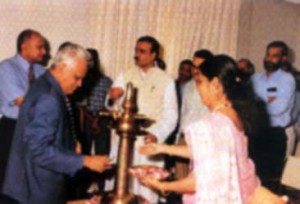Documentation of Central Asian Antiquities
|
|
|
Central Asia is considered to be an important region in view of the fact that it was a meeting place of people of diverse races giving rise to a cosmopolitan culture. This area occupies a strategic geographical position and serves as a channel for diffusion of cultural ideas, arts and crafts, languages and literature in various directions. Because of many historical reasons and Silk Route trade which connected China with the Mediterranean world, interchange of many civilizations like those of India, Hellinized Asia, Iran, Sogdiana and China flourished here. Various religions particularly Buddhism, contributed largely to the growth of Central Asian art and culture. The Buddhist shrines and cave temples of Central Asia are embellished with stuccos and paintings depicting scenes from Buddhas life, Bodhisattva figures, Jatakas and Avadanas, testifying to Indian impact on Central Asian culture. Galaxy of scholars like Sven Hedin from Sweden, Sir Aurel Stein from British India, Albert von Lecoq and Grunwedel from Germany, Kozlov and Oldenburg from Russia and Paul Pelliot from France, explored and discovered the rich cultural heritage of this region during the early years of the last century. The art relics discovered include wall-paintings, silk-paintings and banners, stuccos, wood-carvings, Kharoshti documents, textiles, manuscripts and many other artifacts throwing considerable light on the Central Asian culture .Their discoveries and studies have revealed the nature and stages of growth of the Central Asian civilizations and its relation with the neighboring countries, specially India. The rich geographical, historical and cultural heritage of Central Asia, provided a strong foundation for fostering a dynamic cultural pluralism in the region and also for cross cultural dialogue. Central Asian objects are scattered in various institutions over the globe, viz. the Hermitage Museum and Great Museum of Anthropology and Ethnography, St. Petersburg; Oriental Institute, Moscow; Dunhuang and the National Library, Beijing; Nara, Japan; National Museum, India; Museum for Indian Art, Berlin; Musee Guimet and the Bibliotheque Nationale, Paris; The British Museum (especially the Department of Oriental Antiquities), The Victoria and Albert Museum and the British Library, London; The Metropolitan Museum, New York, The Smithsonian Institution, Washington and The Fogg Art Museum, Harvard University, USA, etc. In the year 1997 an international Seminar, ‘Feasibility Conference for the Documentation of Central Asian Antiquities’ was organized by IGNCA under the aegis of UNESCO. The seminar was attended by representatives of various prestigious institutions in India and abroad. The aim was to take stock of Central Asian antiquities in different museums/institutions of the world. At the end, a resolution was adopted to document the Central Asian antiquities in museums/institutions having major central Asian collections, on a comprehensive basis. In the above context, the present Seminar was organized to modulate and determine an operational framework for documentation of objects in a detailed manner for dissemination of knowledge. The Seminar was inaugurated by the Hon’ble Minister of Tourism and Culture, Shri Ananth Kumar, who spoke at length on the various dimensions of the Central Asian culture which was cosmopolitan in nature. He said, “This is now a forgotten civilization. We can now reconstruct the old culture of Central Asia with the help of the Central Asian antiquities discovered by various scholars. A deep knowledge of the subject would promote good will and cultural relations between various countries.” The Hon’ble Minister further observed, “We have entered an era of clashes of civilizations as well as of the assimilation of civilization of human peace, progress and prosperity. The present seminar is a positive step in that direction.” He announced a lavish grant for modernization of the Central Asian galleries in the National Musuem. Prof N.R. Shetty, Member Secretary IGNCA, in his welcome speech emphasized the need for a comprehensive and collaborative efforts for the documentation of Central Asian antiquities which are of global importance. The UNESCO representative, Mr. Perera appreciated the efforts of the IGNCA for organizing the seminar of great cultural value and offered cooperation to the institution for its future projects. The seminar was attended by scholars and observers from various countries including U.K. Germany, Russia, China and India. The presentations and the discussion that followed were very scholarly and useful. At the end, resolutions were adopted to further Central Asian Studies. |
|
[ Newsletter | List of Newsletter ]





